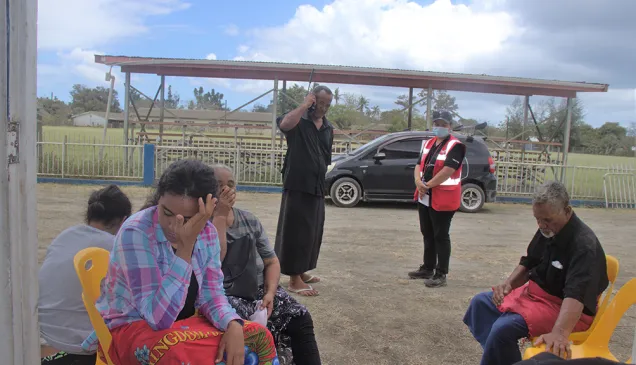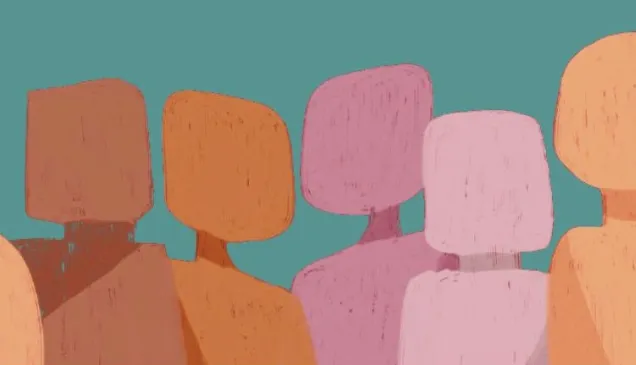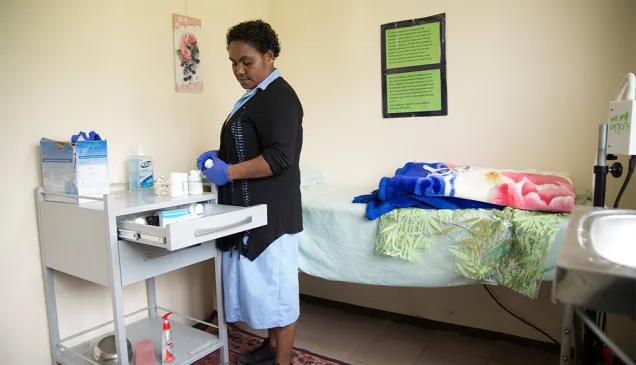World Humanitarian Day: Climate change, conflict and a changing humanitarian response
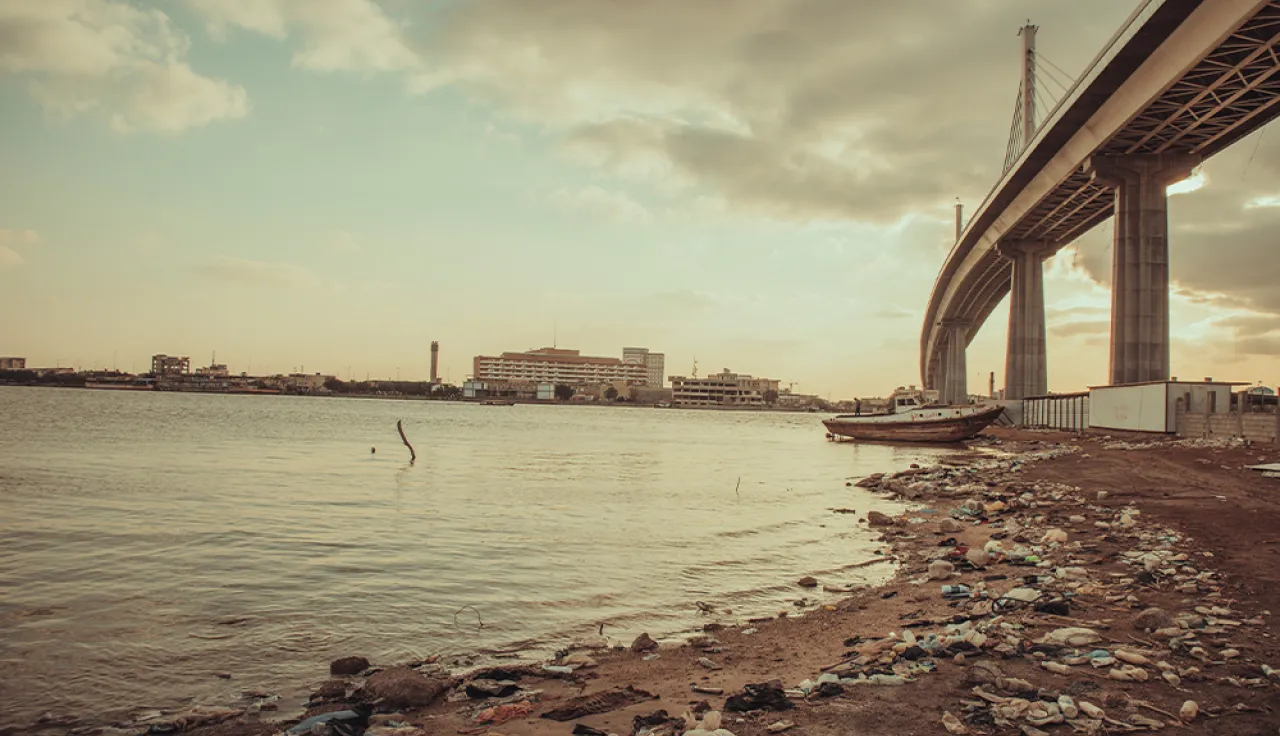
It is the middle of a bad season in northern Mali, an area facing a devastating humanitarian crisis compounded by climate change and conflict.
During seasons like this, herders used to travel with their animals to find grazing land and a water source. Now, combined with the ongoing conflict, this is nearly impossible. The armed violence has also limited the capacity of the state and humanitarian organisations to support herders. The herders feel trapped; staying put means their only source of livelihood would wither away. But if they move, they risk getting caught in the middle of the conflict and never returning home.
Today is World Humanitarian Day, an occasion to honour humanitarian action, celebrate the strength of communities, acknowledge aid workers and pay tribute to those who have lost their lives or been injured in the course of their work. This year's theme draws the world's attention to climate change and its immediate human cost on the communities affected by conflict and other violence. If we don't act now, the number of people requiring humanitarian aid each year could reach 200 million by 2050, in part due to the global climate crisis. This also means that humanitarian action needs to evolve to help people adapt to the changing climate.
Climate change is a threat multiplier – it can worsen the disruption caused by conflict and inflame existing social, economic and environmental risks which could lead to conflict. The foundations of societies are thrown into disarray by conflict; everything from the economy to the environment, health-care infrastructure and social cohesion is uprooted. Within this context, the capacity of people to cope with any changes – including those resulting from a changing climate – is limited. When climate change and conflict mix, the results are devastating.
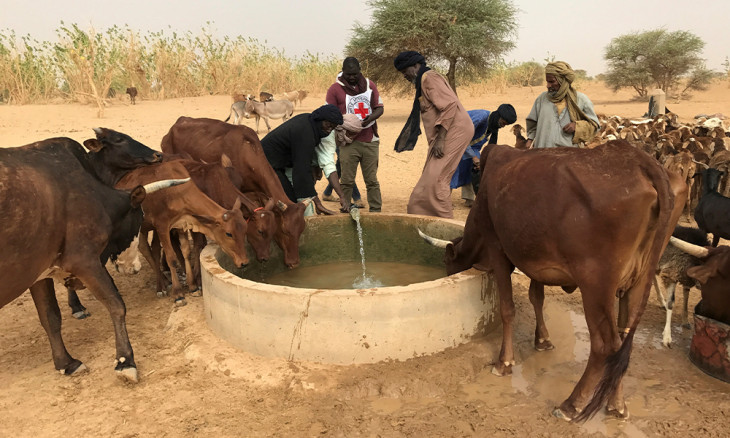
There are 25 countries that are deemed most vulnerable and least ready to adapt to climate change, according to the ND-Gain Index. Fourteen of these are mired in conflict – a testament to the limited capacity of countries in conflict to adapt to a changing climate. People enduring conflict are among the most vulnerable to the climate crisis and the most neglected by climate action. This is a trend that humanitarian organisations like the International Committee of the Red Cross (ICRC) are committed to reversing.
"Before, rain was falling. Now, dust is falling," says an ICRC staff member in Iraq, where rains are scarce but sandstorms are becoming more and more common. The impact of water scarcity in Iraq shows how layers of vulnerability combine to affect all dimensions of people's lives. Iraq's water scarcity is not caused by climate change, but it is amplified by it, as is the building of dams in neighbouring countries, decaying infrastructure and the nation's limited capacity to negotiate water-sharing agreements. This, together with the lasting effects of conflict in southern Iraq, has weakened the country's capacity to maintain infrastructure or support agriculture. Individuals, families and communities have been left to bear the brunt of this fallout, facing little choice but to migrate or find new sources of livelihood, like the Iraqi farmers turning to fishing due to the soil being too salty for farming.
What does climate change mean for the Pacific region? The reality is an existential challenge. This is illuminated by the recent Intergovernmental Panel on Climate Change report. Climate change is one of the primary concerns of national Red Cross societies across the Pacific. They are on the frontlines working with their communities to prepare for and respond to natural disasters and witness to the need to adapt humanitarian responses in the face of climate change. ICRC and the Australian and New Zealand Red Cross Societies have a long-standing partnership with Pacific Island National Societies across 12 different countries, accompanying their steady growth and bolstering communication capacities. During the COVID-19 pandemic, such capacities were essential to communicating public health measures and their pertinence extends to the climate crisis. And this year together with the International Federation of Red Cross (IFRC), the ICRC has signed an agreement for a 3-year initiative with the Tuvalu Red Cross, providing a platform for them to expand their knowledge and capacity to respond to climate impacts, with more national societies are expected to join this exciting journey.
There is no doubt that climate change is intensifying humanitarian crises and humanitarian action needs to adapt to meet this challenge. The ICRC has long worked to protect the lives and dignity of victims of armed conflict and helps these communities rebuild after conflict. As a result, the ICRC has "primarily considered the environment through the lens of international humanitarian law", as my colleague Catherine Lune-Grayson writes. What then does humanitarian action in the face of climate change and conflict looks like? It could mean helping farmers switch to drought-tolerant crops or helping communities devise ways to better use water resources. It could also look mean strengthening the capacity of communities affected by conflict so that they become more resilient to climate shocks.
Earlier this year, the ICRC and the IFRC and Red Crescent Societies adopted the Climate and Environmental Charter for Humanitarian Organizations, a commitment to this action. The Charter, open for signature by all humanitarian organisations, intends to steer collective action responding to climate and environmental crises through actions like reducing greenhouse gas emissions and stepping up the humanitarian response to meet growing needs of impacted people. Since this action must also be led by people who have been affected by conflict, the ICRC is embracing the leadership of local agencies and communities to drive action, ensuring meaningful and inclusive participation.
The continued promotion of humanitarian law also plays an important role as climate risks and environmental degradation are deeply interconnected. The natural environment is all too often a casualty of conflict. From 1946 to 2010, conflict was the single most important predictor of decline in certain wildlife populations. Humanitarian law, however, protects the natural environment and the promotion of these laws could reduce the risks faced by communities enduring conflict. In 2020, the ICRC updated its guidelines on the protection of the natural environment in armed conflict.
The climate is changing everywhere, but it is not affecting everyone in the same way. People living amidst conflict are particularly vulnerable to the impacts of climate change. Humanitarian organisations whose mandate is to protect the lives of people affected by conflict must collaborate to strengthen climate action throughout their work, mobilizing those who are best placed to mitigate climate change and facilitate climate adaption – from governments to local authorities, communities and the private sector.
By Vincent Ochilet
ICRC Head of Regional Delegation in the Pacific

